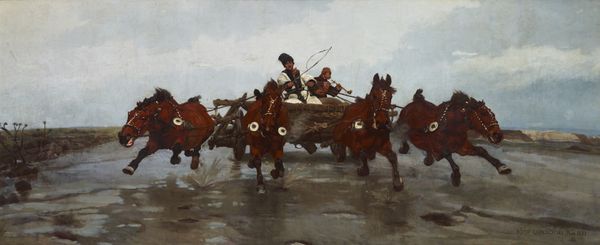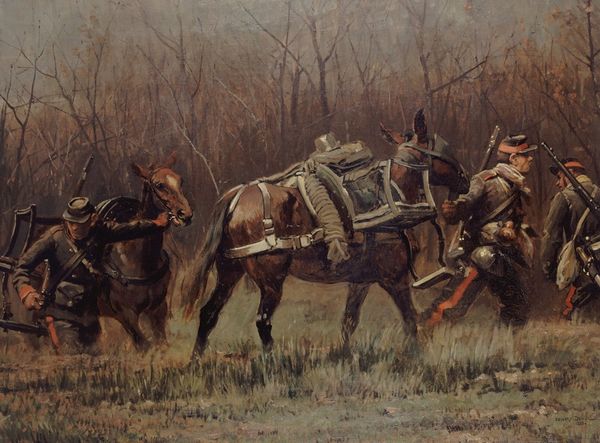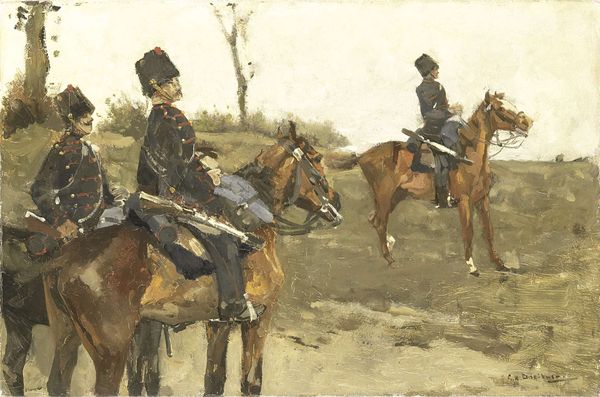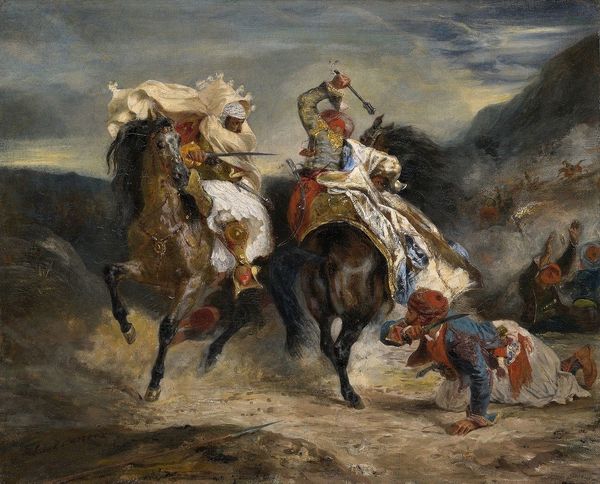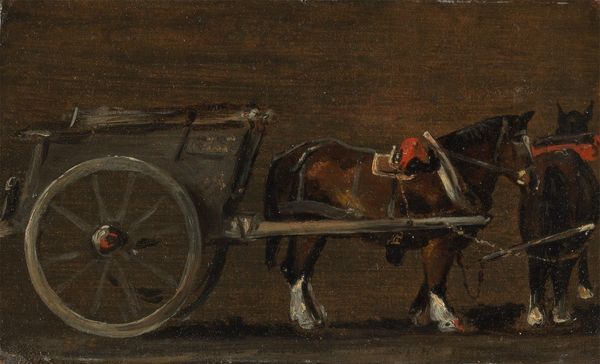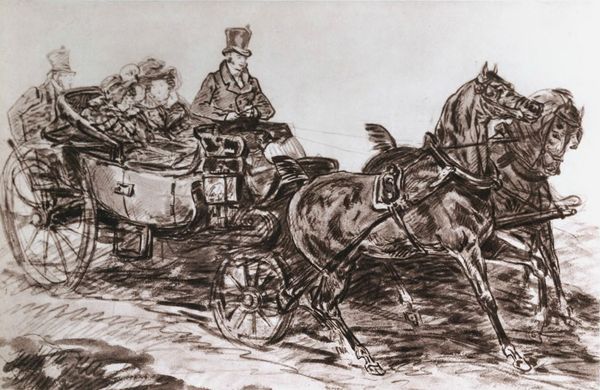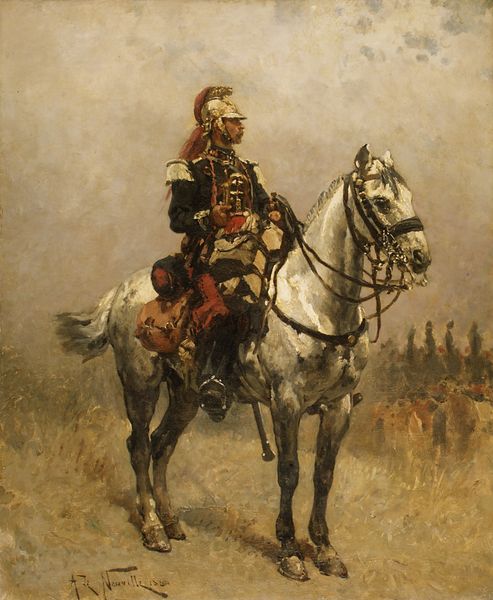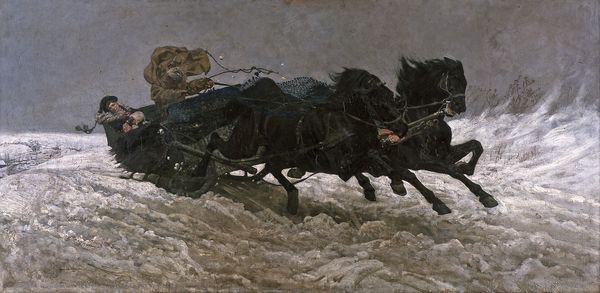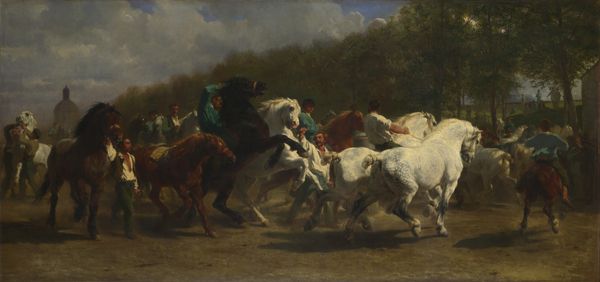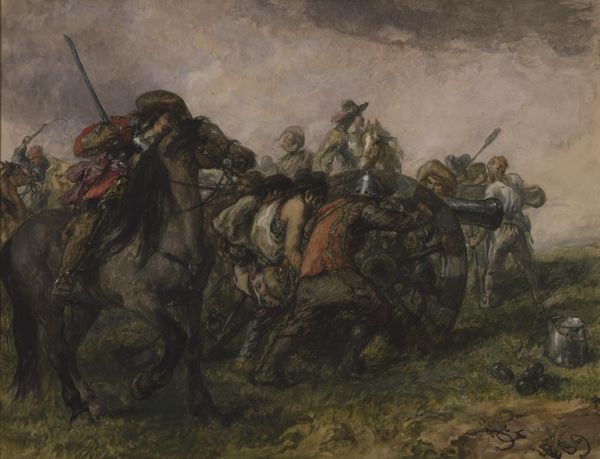
Copyright: Public Domain: Artvee
Editor: So, this is Jacek Malczewski’s "There Comes the Tsar," painted in 1885 using oil paints. It feels incredibly dark and chaotic to me, almost oppressive. What do you see in this piece, especially given the historical context? Curator: That darkness, that feeling of oppression, is precisely where we need to start. Malczewski painted this during a time of intense political tension in Poland, then under Russian rule. The Tsar, represented here, wasn't just a ruler, he was a symbol of imperial power, of subjugation. Notice how the figures surrounding the carriage are almost swallowed by the gloom, faceless and indistinguishable. How do you think this composition reflects the power dynamics at play? Editor: It’s like the Tsar is elevated, both literally in the carriage and metaphorically, while the Polish people are diminished, almost erased. But there’s also a sense of defiance in the way they're portrayed – a raw, almost aggressive energy. Curator: Exactly. Malczewski is invoking Romanticism but subverting it. While the style is rooted in emotion and drama, he's using it to critique power rather than celebrate it. Consider the symbolic weight of the horses. They are dark, powerful, almost demonic in their energy. What could they represent? Editor: Perhaps the unchecked power of the empire, or the forces that crush dissent? It makes me think about how even seemingly objective portrayals of historical events can be loaded with the artist's own perspective and political commentary. Curator: Precisely. And it reminds us that art is never created in a vacuum. Examining the historical, social, and political climate allows us to unpack the deeper meanings and understand the artist's agenda, whether overt or implicit. Editor: I see now how Malczewski used this scene, not just to depict a historical moment, but to make a powerful statement about Polish identity and resistance. Curator: And to consider how these dynamics continue to resonate today in conversations around power, identity, and resistance. Art becomes a powerful tool to dissect the narrative of history and envision new futures.
Comments
No comments
Be the first to comment and join the conversation on the ultimate creative platform.
